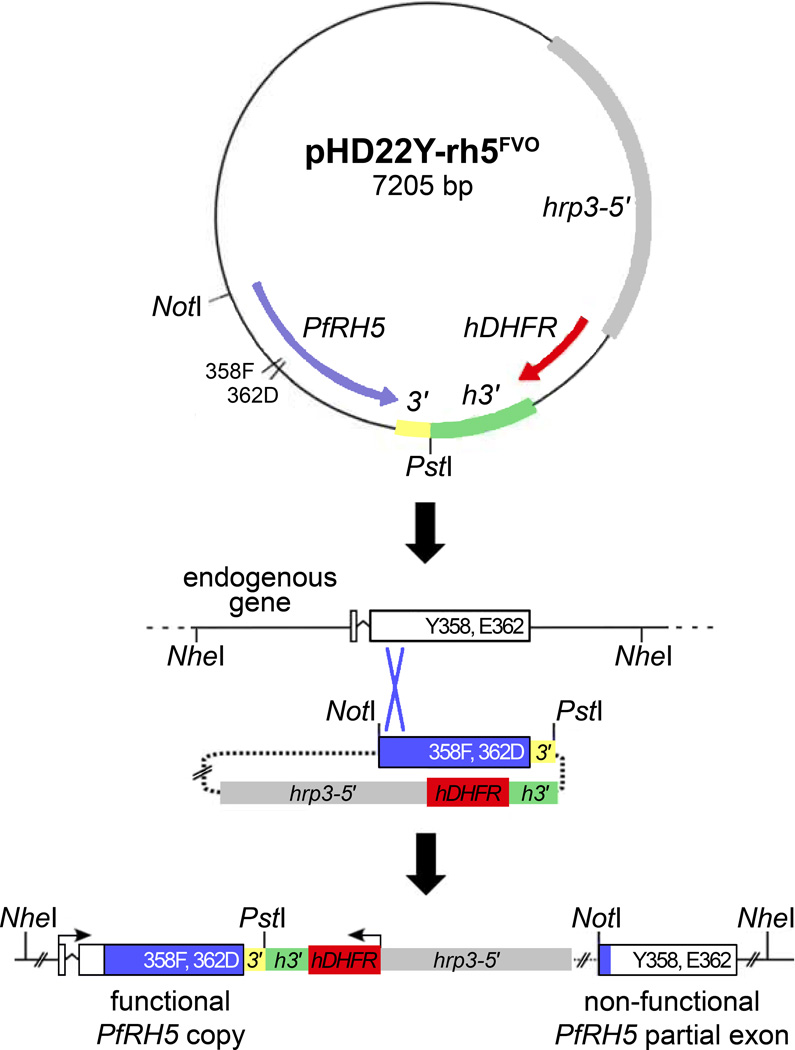Fig 1.
Illustration of the strategy to generate PfRH5-modified 7G8 parasites by homologous recombination. A 1396-bp fragment of PfRH5 containing codon polymorphisms of the FVO parasite was PCR-amplified and cloned into the pHD22Y vector [45]. Following transfection of 7G8 parasites with the desired construct, a portion of the FVO PfRH5 gene along with the 0.2 kb 3′ flanking sequence spontaneously recombined by single-site crossover and replaced the endogenous 7G8 PfRH5 sequence with a modified allele. The remainder of the construct, including the hDHFR drug selection marker, and a remnant of the endogenous 7G8 PfRH5 sequence lie downstream of the modified PfRH5 allele. Similar strategies were used for the other constructs employed in this study. 3′, 3′ terminal flanking region of PfRH5; hrp3-5′, promoter region from P. falciparum histidine-rich protein 3; hDHFR, human dihydrofolate reductase coding segment; h3′3′ regulatory region of P. falciparum histidine-rich protein 2.

